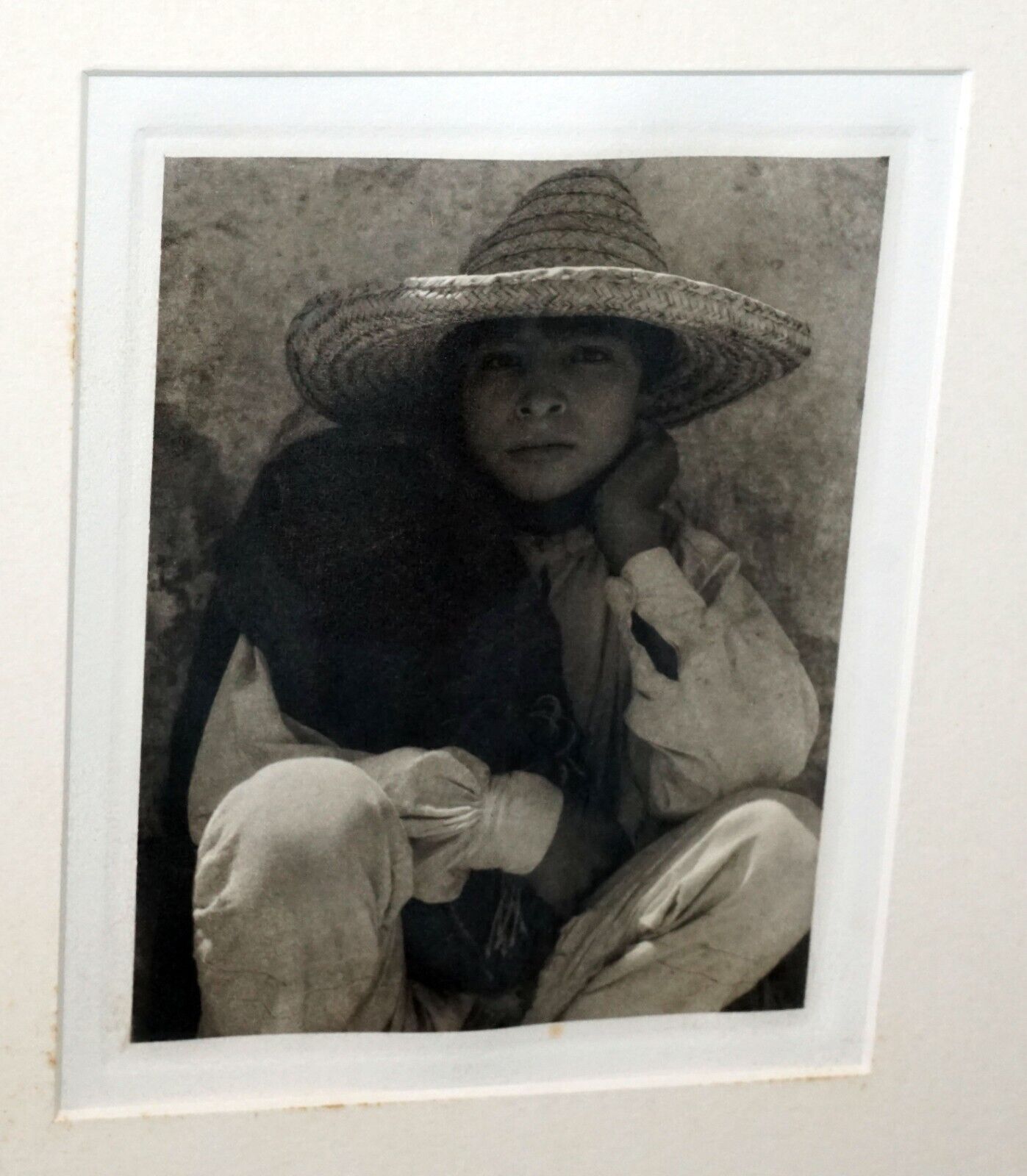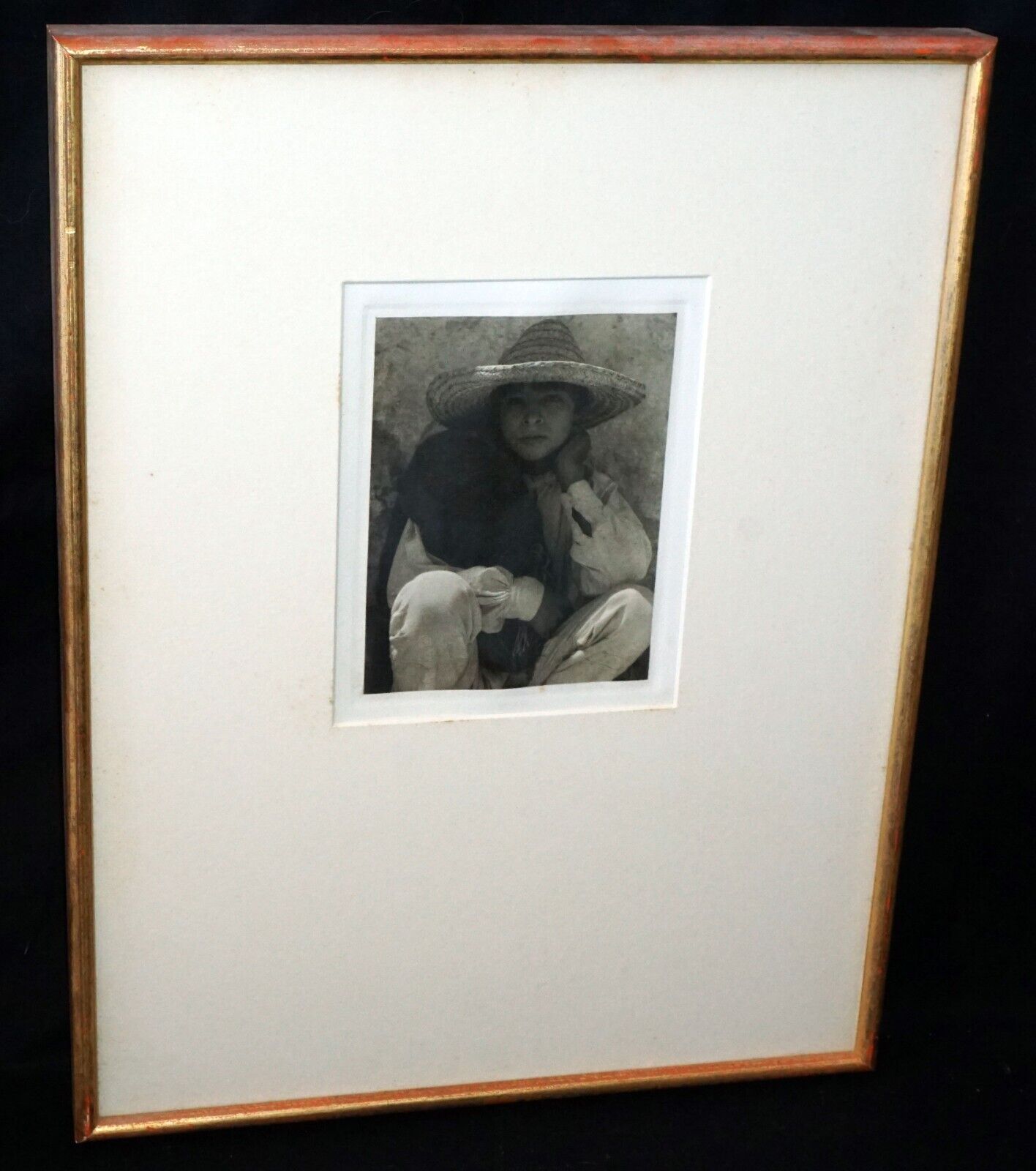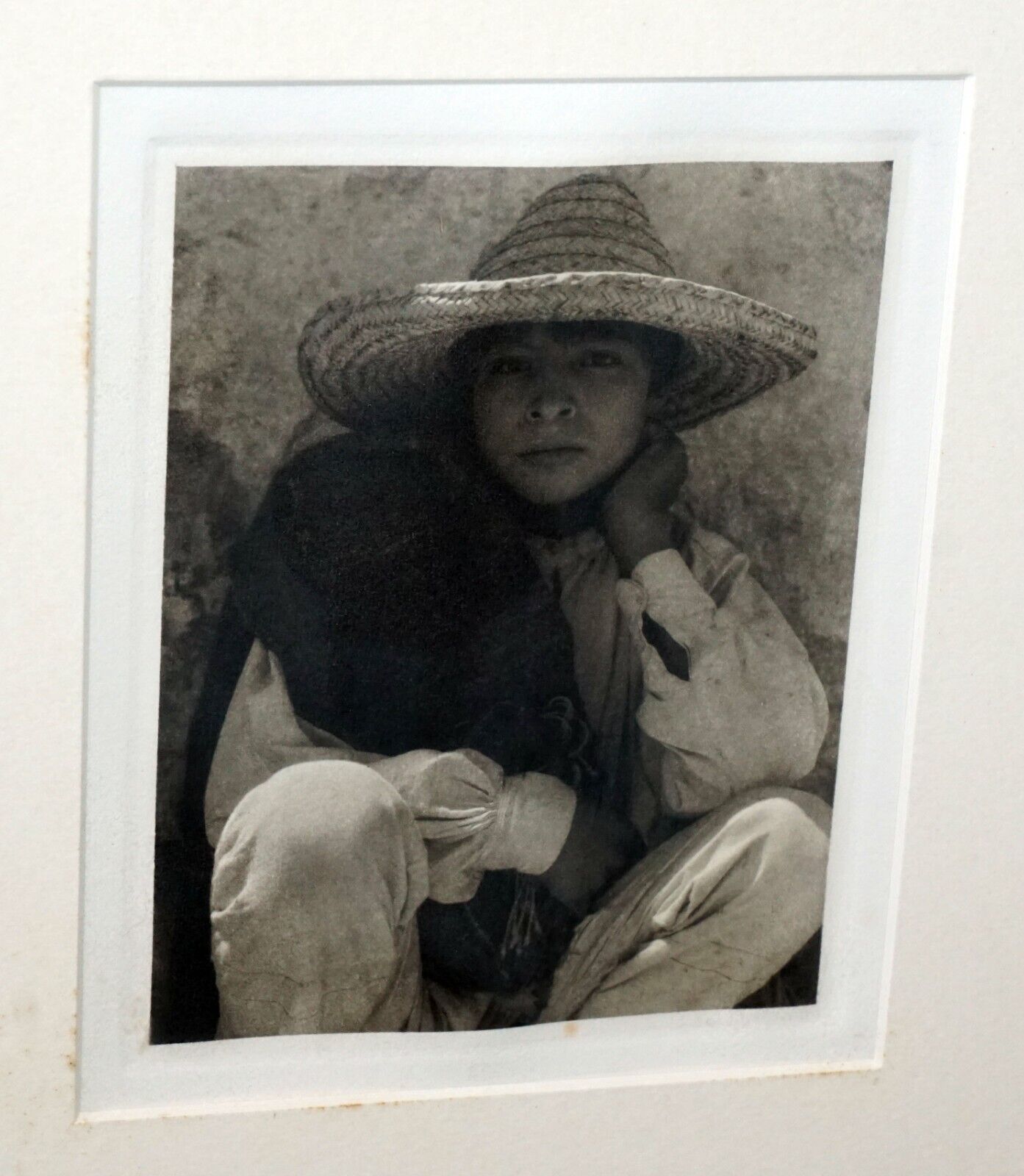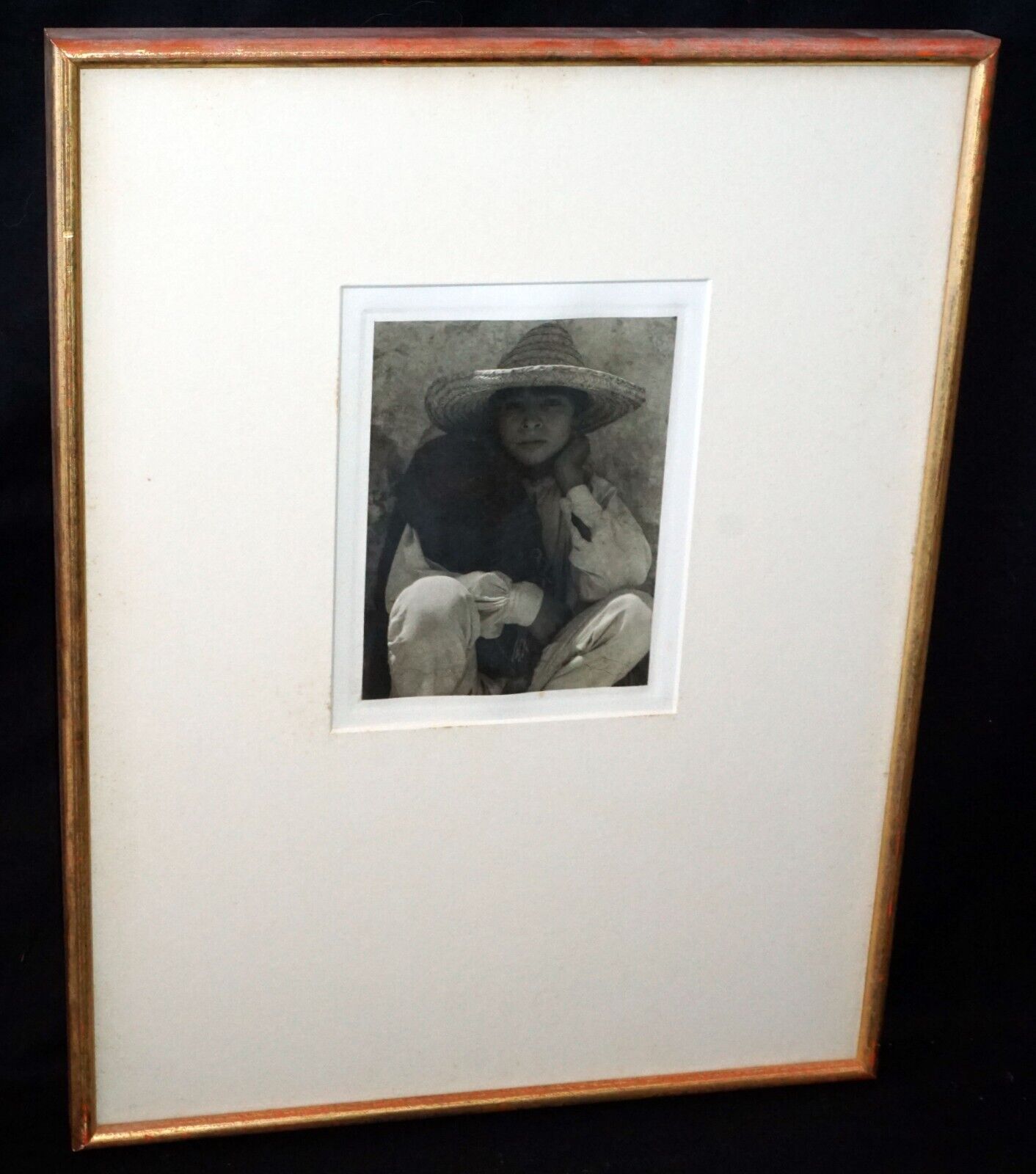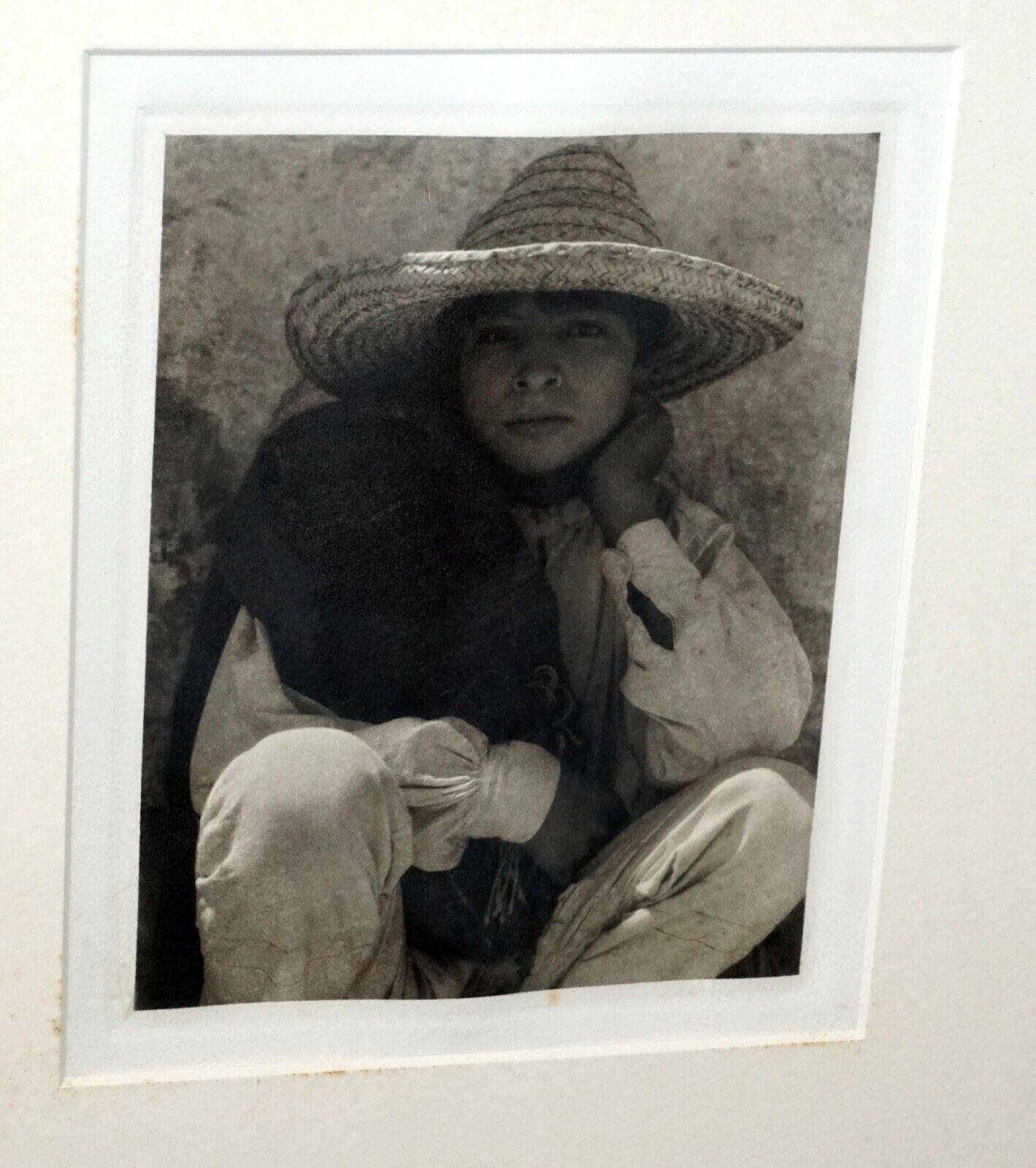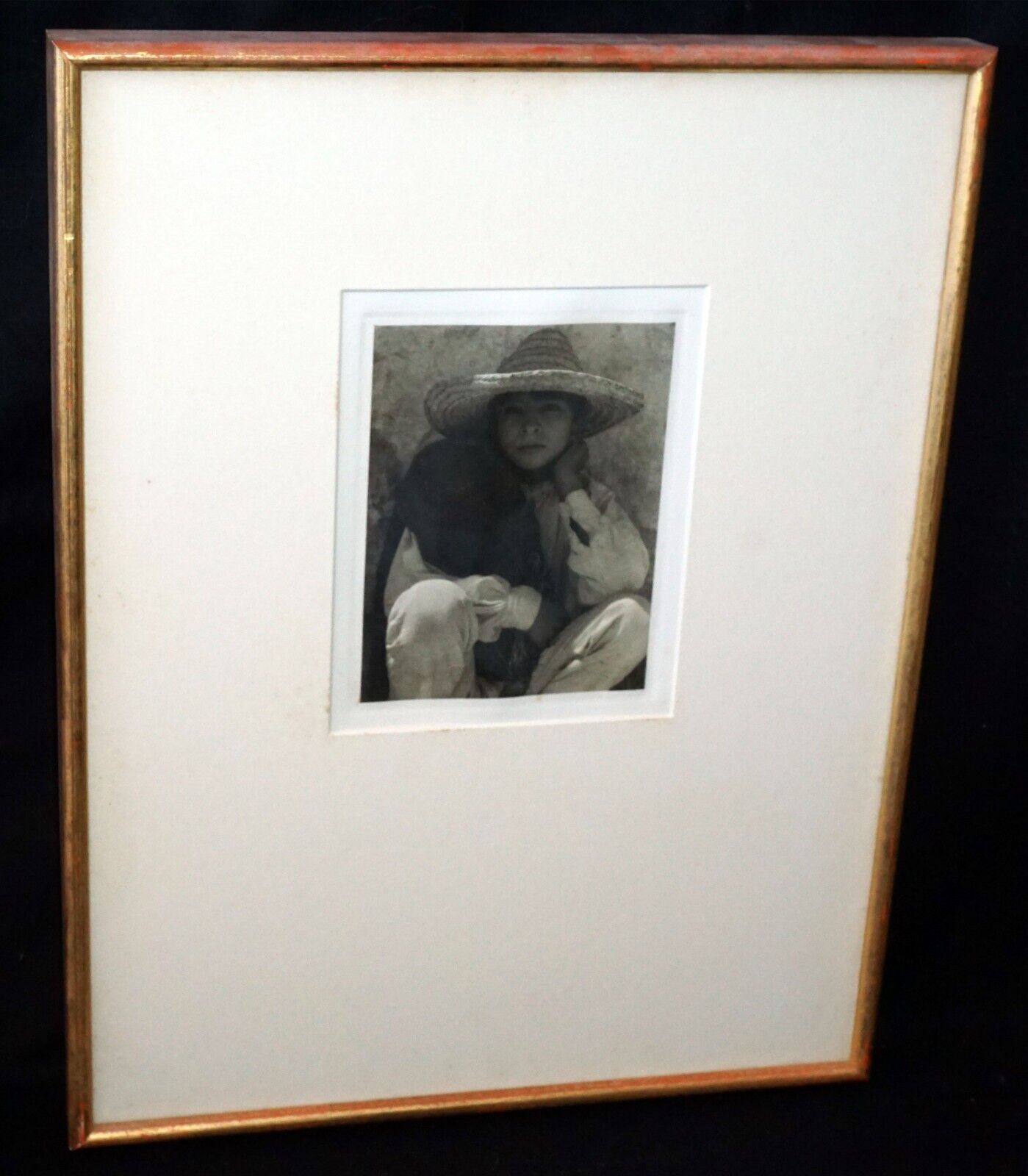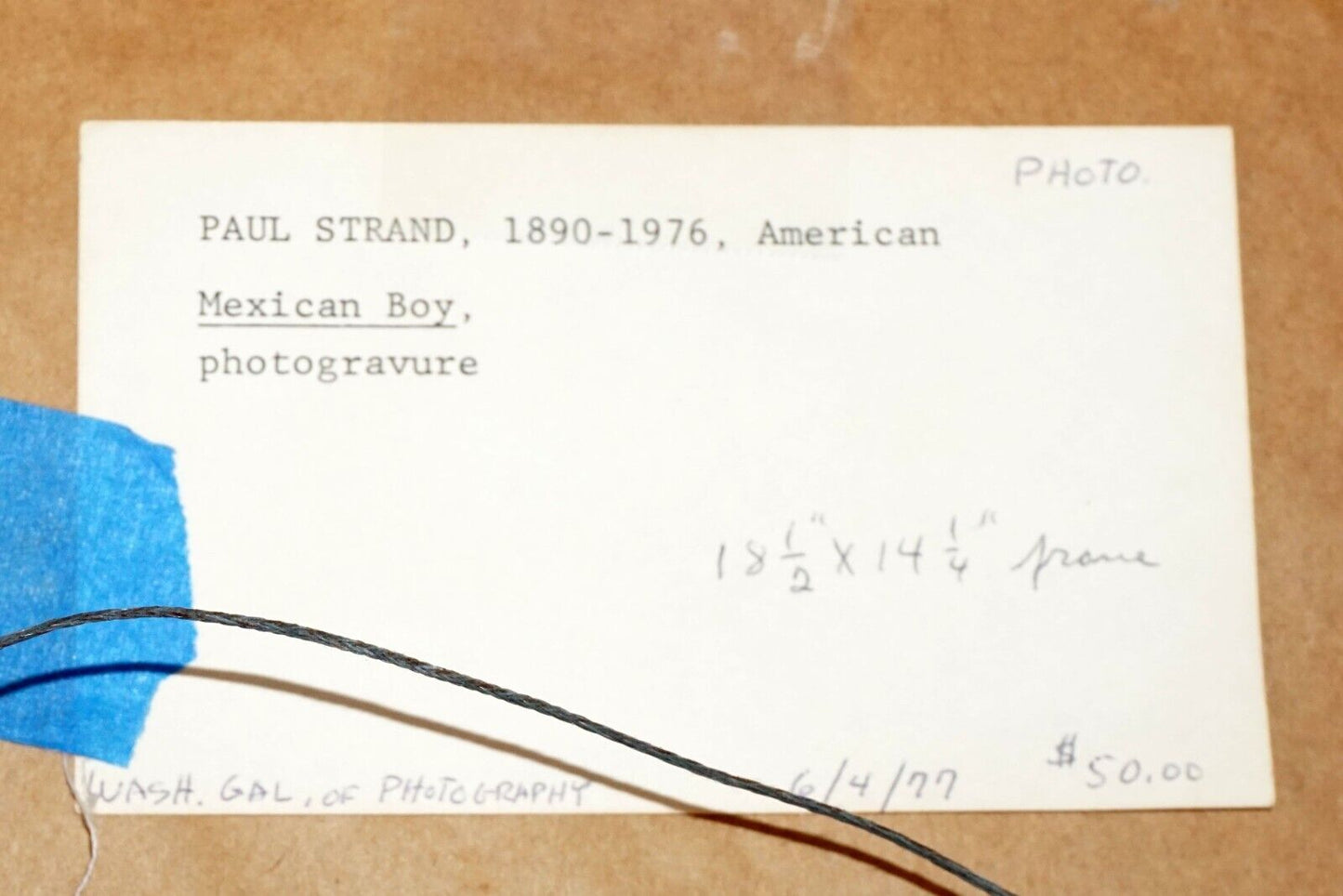Harnisch and Company
1933 US Framed Photogravure "Boy Hidalgo" by Paul Strand (1890-1976)(PaR)
1933 US Framed Photogravure "Boy Hidalgo" by Paul Strand (1890-1976)(PaR)
Couldn't load pickup availability
Share
Up for sale from a recent estate in Honolulu Hawaii, this 1925 US/ French expressionist limited edition 9/50 lithograph print that is titled "Edith" depicting a female female figure reclining in a chair in an interior and was created by the artist Walt Francis (Walter) Kuhn (1877-1949). The condition is described above for more information please check the photos. Free local pick up possible!!! I am working with a great paper conservator - Oppenheimer Inc. - I do all my conservation with them and get a discount that I would be happy to extend to you if you would like this piece to be cleaned.
Measurements:
Image 6 ¼ inches x 4 ¾ inches
Frame 18 ½ inches x 14 ½ inches
More about the artist:
The American artist Paul Strand had a long and productive career with the camera. His pictorialist studies of the 1910s, followed by the coolly seductive machine photographs of the 1920s, like the contemporary work of Alfred Stieglitz and Edward Weston, helped define the canon of early American modernism and set its premium on the elegant print. Experimenting with Charles Sheeler, Strand then pushed further in describing the movement of the city in the short film Manhattan (1920). In the 1930s, he became seriously involved with documentary film and, from the 1940s until the end of his life, he was committed to making photographic books of the highest quality. After 1950, when he relocated to France, landscape, architecture, and portraiture (the traditional humanist genres) continued to inspire Strand to embody the spirit of his subjects in the very materials of the photographic print. The high regard for his mature work suggests that he succeeded in his goals, and that his standards of excellence and his constancy of subject answered very human needs in a century of radical change.
Treating the human condition in the modern urban context, Strand's photographs are a subversive alternative to the studio portrait of glamour and power.
Strand was introduced to photography as a high school student at New York City's Ethical Culture School. His first photography teacher, Lewis Hine, instilled in Strand a deep sense of commitment to the social betterment of humankind. In 1907, the school's camera club took a field trip to Alfred Stieglitz's Little Galleries of the Photo-Secession at 291 Fifth Avenue, where they saw an exhibition of photographs by members of the Photo-Secession, including Gertrude Käsebier, Edward Steichen, Clarence H. White, Frederick H. Evans, and Joseph Turner Keiley. For Strand it was a defining moment: he decided that day to become a photographer. During the next seven years he applied himself to this task, shadowing in his development that of Pictorialists a generation older, and consciously emulating Steichen and White.
In early 1915, his mentor Stieglitz criticized the graphic softness of Strand's photographs and over the next two years he dramatically changed his technique and made extraordinary photographs on three principal themes: movement in the city, abstractions, and street portraits. During the 1910s, New York thronged with pedestrians, carriages, and automobiles, and the streets became the unavoidable symbol of flux, change, and modernity. Photographers such as Alvin Langdon Coburn and Karl Struss and many painters, including John Marin, pursued the "great hastening metropolis" as a vital subject. Being a very deliberate artist, however, Strand was not initially taken with the "rush and go" but instead structured his images on relatively slow movements, usually of a single person, as is seen in From the El (1915; 49.55.221). Soon he increased the complexity and upped the tempo of his compositions with the multiple rhythms of midtown and downtown crowds.
Following Stieglitz's exhibitions of avant-garde European art at 291 and the Armory Show of 1913, several other New York galleries began to show modern European painting. Thus by 1916, Strand had repeatedly immersed himself in the new artistic idioms, especially as represented by Cézanne and Picasso. Upon arriving at the summer cottage his family rented every year at Twin Lakes, Connecticut, he set about learning "how you build a picture, what a picture consists of, how shapes are related to each other, how spaces are filled, how the whole thing must have a kind of unity." Scavenging some crockery and fruit from the cottage kitchen, Strand made arrangements on the porch, learning how to create movement and depth in the compact universe that became the picture. First tilting the bowls, then the rocking chair and table, and then further rotating his photograph ninety degrees, Strand gradually abandoned the recognizable and comfortable for a space that is largely incomprehensible, a pattern of tones of extraordinary authority and dynamic formal coherence. These stunning photographs, including Abstraction, Twin Lakes, Connecticut (1916; 1987.1100.10), were the first significant abstractions intentionally made with a camera.
For a long time, Strand had wanted to make "portraits of people such as you see in the New York parks and places, sitting around, without their being conscious of being photographed. ... I felt that one could get a quality of being through the fact that the person did not know he was being photographed ... [and I wanted to capture] these people within an environment which they themselves had chosen to be in, or were in anyway." Strand set out for Five Points, the heart of the immigrant slums on the Lower East Side, with his camera rigged with a false lens to distract attention. Approaching a potential subject, Strand turned ninety degrees away and aimed the false lens in the direction he was facing. The real lens, on an extended bellows, stuck out under his arm toward the person, whom Strand could see by looking into his lens hood sideways or sneaking a glance over his shoulder. The clumsiness of the operation made it exceedingly difficult and "nerve-racking," but it allowed Strand to capture his subject unaware.
Many of the people Strand photographed were classic New York types of the period: unshaven toughs, red-nosed Irish washerwoman, Jewish patriarchs, aging Europeans, blind peddlers (33.43.334), and sandwich men. Like Lewis Hine, Strand was collecting the poignant evidence of poverty among the cultures that crowded the metropolis. Treating the human condition in the modern urban context, Strand's photographs are a subversive alternative to the studio portrait of glamour and power. A new kind of portrait akin to a social terrain, they are, as Sanford Schwartz put it, "cityscapes that have faces for subjects."
Condition:
The item is in good pre-owned condition, one small brown spot in the lower margins, frame with wear to the gilt finish, comes with a collection card, that states this piece was acquired from the Washington gallery of Photography
